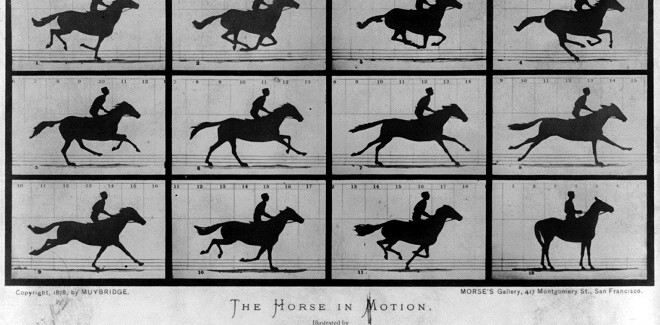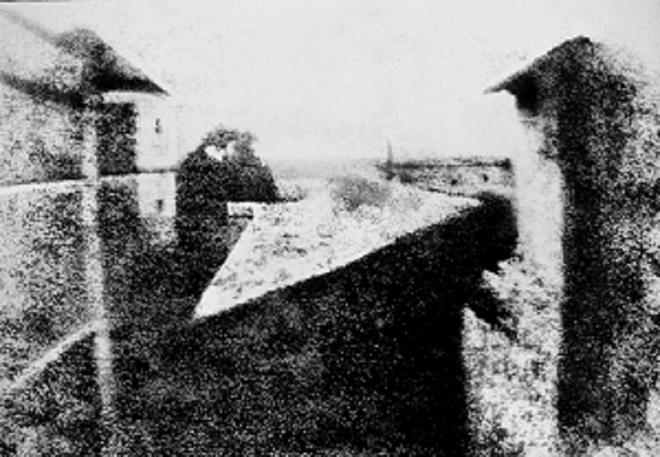The Full Circle of Motion Pictures
In the 17th century, people were dazzled by the first image projector, dubbed the Magic Lantern. It used the sun or a candle as the light source, a concave mirror, and a painted lantern slide to project images on a wall. Audience members could be convinced that spirits were being summoned or the dead was being raised from the grave. Today, kids are bored when they’re watching their favorite computer animated show on a smartphone that fits into the palm of their hand. We’ve come a long way in the technology of motion pictures. However, some of the recent fads in the medium aren’t actually new at all. They’re over a hundred years old.
Since we’re discussing the history of motion pictures, we may as well start at the beginning. In order to maintain the attention of the modern internet user, there will be some fast forwarding involved so you aren’t too tempted to switch over to a live video stream of penguins or whatever other wonders the World Wide Web has to offer.
In 1826, the earliest surviving photograph was taken in France by Joseph Nicéphore Niépce. The photo depicts a view from the upstairs window of his estate, titled View from the Window at Le Gras.
Fast forward to 1877. French scientist Etienne-Julles Marey and American photographer Eadweard Muybridge worked together on a method to determine whether all four of a horse’s legs come off the ground at the same time while it runs. They created a special track rigged with a series of wires. As the horse tripped each wire, cameras were triggered that took photographs in rapid succession. Spoiler Alert: All four of a horse’s legs do leave the ground simultaneously. What began as a scientific endeavor came to lay the groundwork for motion pictures.
Fast forward to 1894. This is where an interesting parallel to modern video trends starts to unfold. By this time, Thomas Edison is a big name in the business. He’s invented and begun to sell the Kinetoscope, which was a viewing station for films. These babies started popping up in Penny Arcades and allowed one person at a time to view short black-and-white movies, ranging in length from just a few seconds long to a whopping 90 seconds. Among the popular movies of that time was a very short clip titled Fred Ott’s Sneeze. Spoiler Alert: Fred Ott sneezes in the movie. Edison filmed one of his crew members sneezing and people actually wanted to see it. In fact, it was the first ever motion picture to be copyrighted.

Fast forward to 2007. A video of a baby panda sneezing goes viral on YouTube. 113 years after people rushed to the Penny Arcade to see a 5 second movie of a grown man’s sneeze, they were rushing to their computers to watch a 17 second movie of a young bear’s sneeze.
Fast forward to 2012. Oxford University Press votes to make “GIF” the word of the year. GIF stands for Graphics Interchange Format and allows anybody to create short clips of video with no audio. What do we do with this new awesome power? Sneezing animals!

2012 is also the year that Vine was founded. Vine allows users to create short six second videos with their phones and edit on the fly while they’re shooting. Vines have created some of the strangest and most creative internet content I’ve ever seen. But for the sake of continuity, I give you this vine about sneezes.
Okay, so that was a lot of sneezing. But the point I’m really trying to make is that the run time of the movies being made has gone full circle. While the length of them was first dictated by the available motion picture technology, the length is now dictated by our attention spans. I’ll be honest. I’ve caught myself trying to skip ahead to the interesting part of a Vine, because apparently I couldn’t sit through the entire six second video. With such accessible methods, nearly anybody can create and share their own movies. As a result, there is a seemingly infinite amount of internet content to sift through in any given sitting. Therefore, we don’t want to spend too much time on any single piece. This is both a great and terrible thing. We’re always searching for the next viral video that might be just a few clicks away, but we’re not completely satisfied with whatever we have in front of us.
One other interesting trend in film that seems to have been passed on over the years is the lack of creative titles whenever a new medium is still young. As previously mentioned, the oldest surviving photo from 1826 was called View from the Window at Le Gras. Doesn’t exactly leave much to interpretation. One of the early films from 1894 was called Fred Ott’s Sneeze. Yeah, I think I know how this one ends. Finally, in 2005, YouTube made its grand entrance to the internet. The first video uploaded was masterfully titled Me at the Zoo. Yep. You guessed it. A guy went to the zoo and posted a video of it. Shocker!
Still, we have definitely come a long way as audience members. One old tale from cinema lore describes how a crowd screamed in fear and retreated from the screen when the movie The Arrival of a Train at La Ciotat Station was first shown in 1896. The urban legend is that the folks watching the movie of a train pulling into the station were worried that the train was actually going to crash through the screen into their seats. It may be a bit exaggerated, but the audience was surely amazed to see the recreation of the outside world produced inside of a dark room. Today, we are a bit savvier. You can see people in 3D movies yawning as an explosion on screen realistically throws a pickup truck right at their face.
So there you have it. Five second movies with obvious titles were all the rage in in the late 1890’s, and they’re growing in popularity now. The difference is that while only a select few were able to create them over a hundred years ago, virtually anyone can contribute to the pool of creativity today. One resulting byproduct is that because everyone can, nearly everyone does. To quote Dr. Ian Malcom from Jurassic Park, “Yeah, but your scientists were so preoccupied with whether or not they could, they didn’t stop to think if they should.” With so many people uploading videos from all over the world, there is a lot of stuff out there that shouldn’t really see the light of day. Anyone who has ever gotten lost in a black hole of YouTube or general internet browsing has probably seen at least a couple of things that they wish they could unsee. Yet we soldier on, because there might be a wonderful cat video with our name on it just around the digital corner.
I’ll leave you with a couple short clips. Blacksmith Scene is an 1893 movie that is hailed as the first staged film with actors and was the first film publicly shown on a Kinetoscope. It’s a riveting tale of three dudes hitting an anvil and drinking beer.
Now, observe the masterful Cookie Monster telling a timeless love story in just a few short seconds without the assistance of audio.

Happy browsing folks. Armed with the knowledge that you share the same cinema tastes as your great-great grandparent, you may now continue in search for that perfect compilation of babies laughing at dogs.
-
Love it. Technologically and historically interesting.





Comments